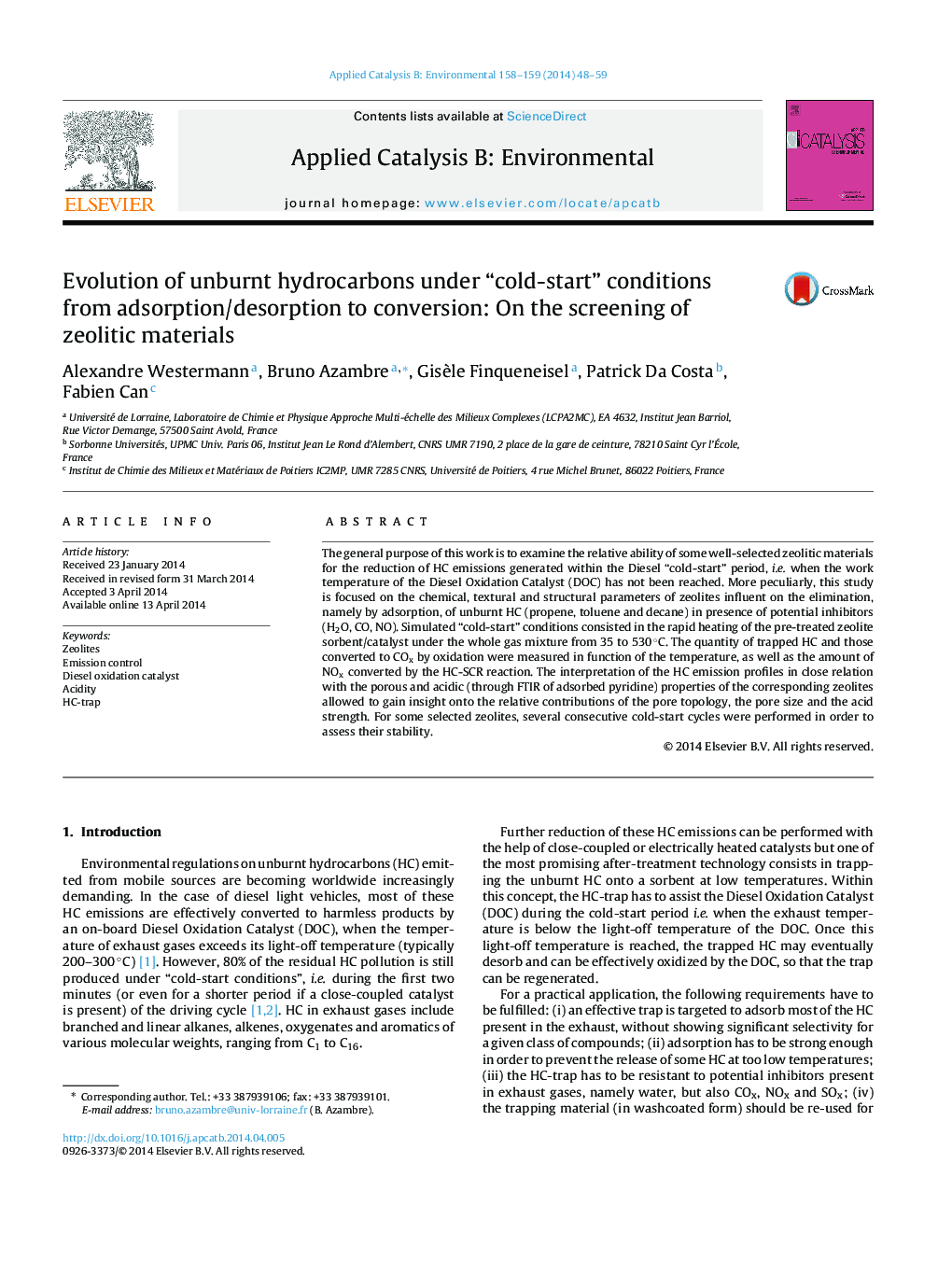| Article ID | Journal | Published Year | Pages | File Type |
|---|---|---|---|---|
| 45853 | Applied Catalysis B: Environmental | 2014 | 12 Pages |
•Selected zeolites were studied under representative cold-start diesel conditions.•The acidity of zeolites increases the efficiency of HC trapping and NOx conversion.•Large pores and/or hydrophobic zeolites are more selective for decane adsorption.•Pt- and Cu loaded zeolites are the most efficient in oxidizing the HC above 250 °C.•HZSM-5 and Cu/Y zeolites are promising materials for cold-start application.
The general purpose of this work is to examine the relative ability of some well-selected zeolitic materials for the reduction of HC emissions generated within the Diesel “cold-start” period, i.e. when the work temperature of the Diesel Oxidation Catalyst (DOC) has not been reached. More peculiarly, this study is focused on the chemical, textural and structural parameters of zeolites influent on the elimination, namely by adsorption, of unburnt HC (propene, toluene and decane) in presence of potential inhibitors (H2O, CO, NO). Simulated “cold-start” conditions consisted in the rapid heating of the pre-treated zeolite sorbent/catalyst under the whole gas mixture from 35 to 530 °C. The quantity of trapped HC and those converted to COx by oxidation were measured in function of the temperature, as well as the amount of NOx converted by the HC-SCR reaction. The interpretation of the HC emission profiles in close relation with the porous and acidic (through FTIR of adsorbed pyridine) properties of the corresponding zeolites allowed to gain insight onto the relative contributions of the pore topology, the pore size and the acid strength. For some selected zeolites, several consecutive cold-start cycles were performed in order to assess their stability.
Graphical abstractFigure optionsDownload full-size imageDownload as PowerPoint slide
